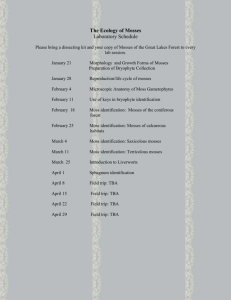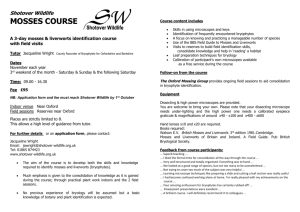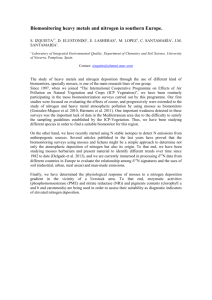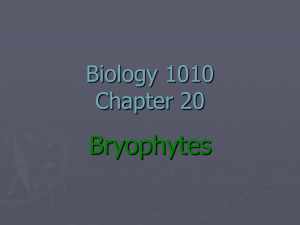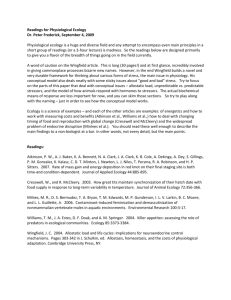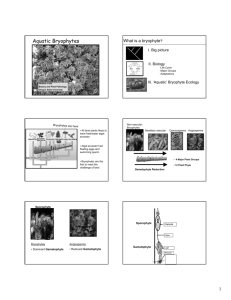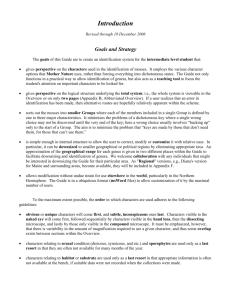The Ecology of Mosses
advertisement
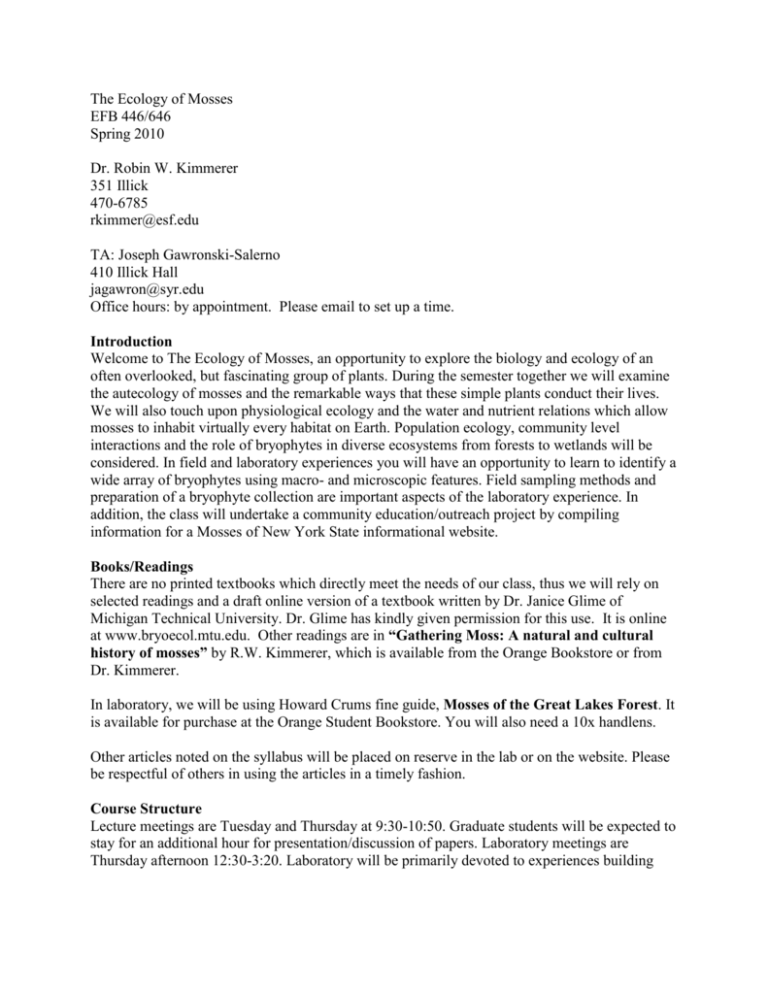
The Ecology of Mosses EFB 446/646 Spring 2010 Dr. Robin W. Kimmerer 351 Illick 470-6785 rkimmer@esf.edu TA: Joseph Gawronski-Salerno 410 Illick Hall jagawron@syr.edu Office hours: by appointment. Please email to set up a time. Introduction Welcome to The Ecology of Mosses, an opportunity to explore the biology and ecology of an often overlooked, but fascinating group of plants. During the semester together we will examine the autecology of mosses and the remarkable ways that these simple plants conduct their lives. We will also touch upon physiological ecology and the water and nutrient relations which allow mosses to inhabit virtually every habitat on Earth. Population ecology, community level interactions and the role of bryophytes in diverse ecosystems from forests to wetlands will be considered. In field and laboratory experiences you will have an opportunity to learn to identify a wide array of bryophytes using macro- and microscopic features. Field sampling methods and preparation of a bryophyte collection are important aspects of the laboratory experience. In addition, the class will undertake a community education/outreach project by compiling information for a Mosses of New York State informational website. Books/Readings There are no printed textbooks which directly meet the needs of our class, thus we will rely on selected readings and a draft online version of a textbook written by Dr. Janice Glime of Michigan Technical University. Dr. Glime has kindly given permission for this use. It is online at www.bryoecol.mtu.edu. Other readings are in “Gathering Moss: A natural and cultural history of mosses” by R.W. Kimmerer, which is available from the Orange Bookstore or from Dr. Kimmerer. In laboratory, we will be using Howard Crums fine guide, Mosses of the Great Lakes Forest. It is available for purchase at the Orange Student Bookstore. You will also need a 10x handlens. Other articles noted on the syllabus will be placed on reserve in the lab or on the website. Please be respectful of others in using the articles in a timely fashion. Course Structure Lecture meetings are Tuesday and Thursday at 9:30-10:50. Graduate students will be expected to stay for an additional hour for presentation/discussion of papers. Laboratory meetings are Thursday afternoon 12:30-3:20. Laboratory will be primarily devoted to experiences building skill in bryophyte identification for the early part of the semester. As soon as field conditions permit, the class will consist largely of field trips. Course Requirements You will need to obtain a good quality hand lens for use in the field. It is expected that every student will bring one to all field labs. This is a vital tool for bryology. Reading assignments for the week should be completed prior to class for maximum participation in discussion. A 15 minute test will be given on Thursday each week, in lieu of periodic hourly exams. Frequent, short tests have been shown to be an effective means of mastering and retaining complex information. The course involves progressive development of knowledge about mosses, so mastery of the early material is critical to later success. Each student is responsible for preparation of bryophyte collection of 30 identified specimens, due on April 22. Specimens must be prepared according to the attached guidelines. The class will participate in a shared service learning project to be discussed in class. Graduate students in the course are responsible for an oral presentation to the class during the lecture period, based on issues of interest in bryophyte ecology. The presentation is to be approximately 30 minutes in length and presented in professional style. Grades will be computed as follows: 10 weekly tests @ 25 points each .............................................................................................. 250 Final cumulative exam ............................................................................................................... 100 Collection ................................................................................................................................... 150 Lab quizzes - 3 @ 20 points each .............................................................................................. 60 Writing Project ........................................................................................................................... 40 Lab practical............................................................................................................................... 100 Labs - 5 @ 20 points .................................................................................................................. 100 Collaborative Project ................................................................................................................. 100 Participation ............................................................................................................................... 100 Total 1000

